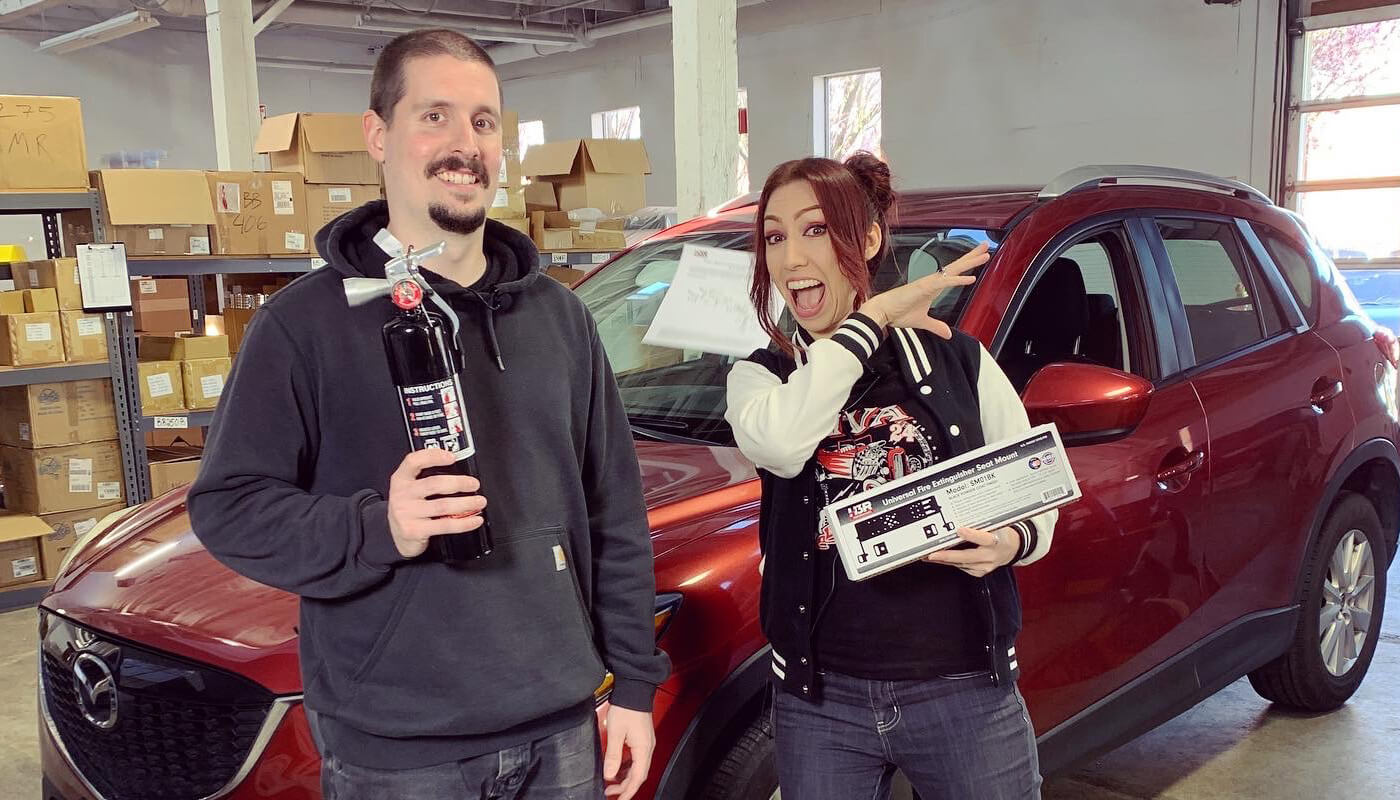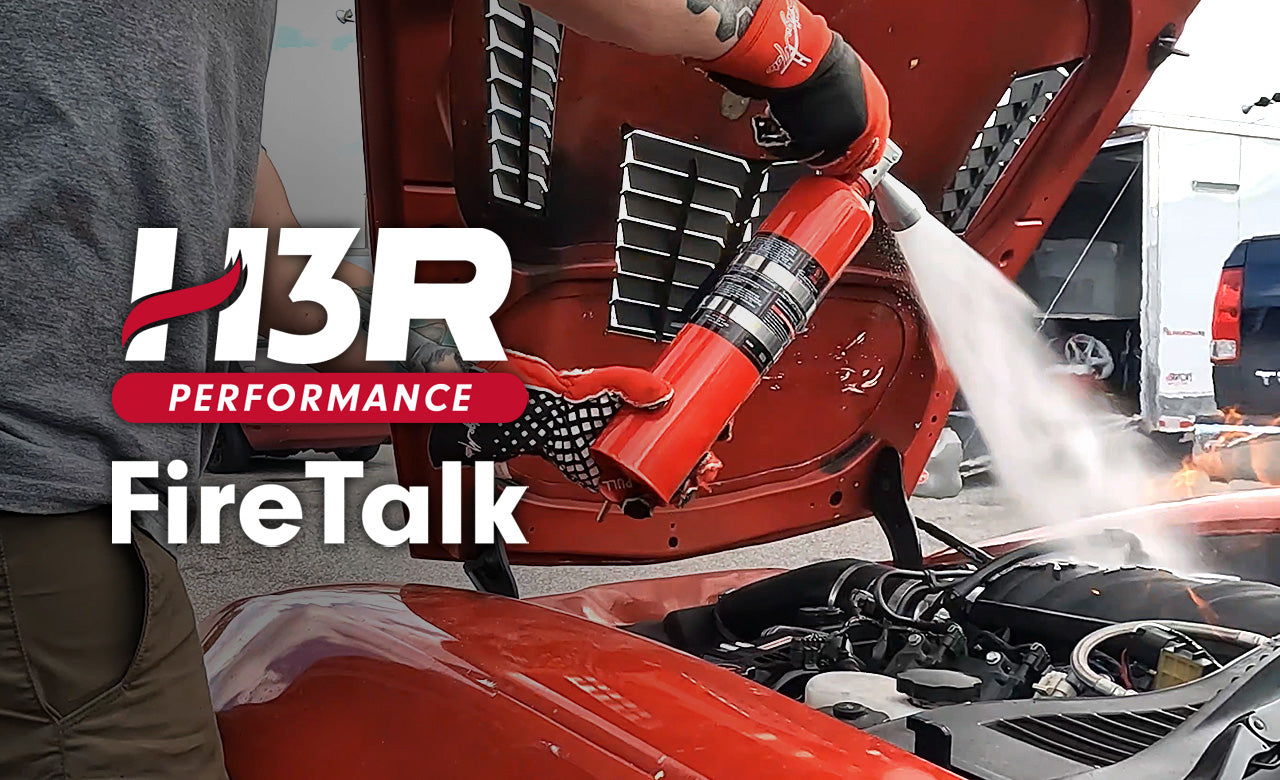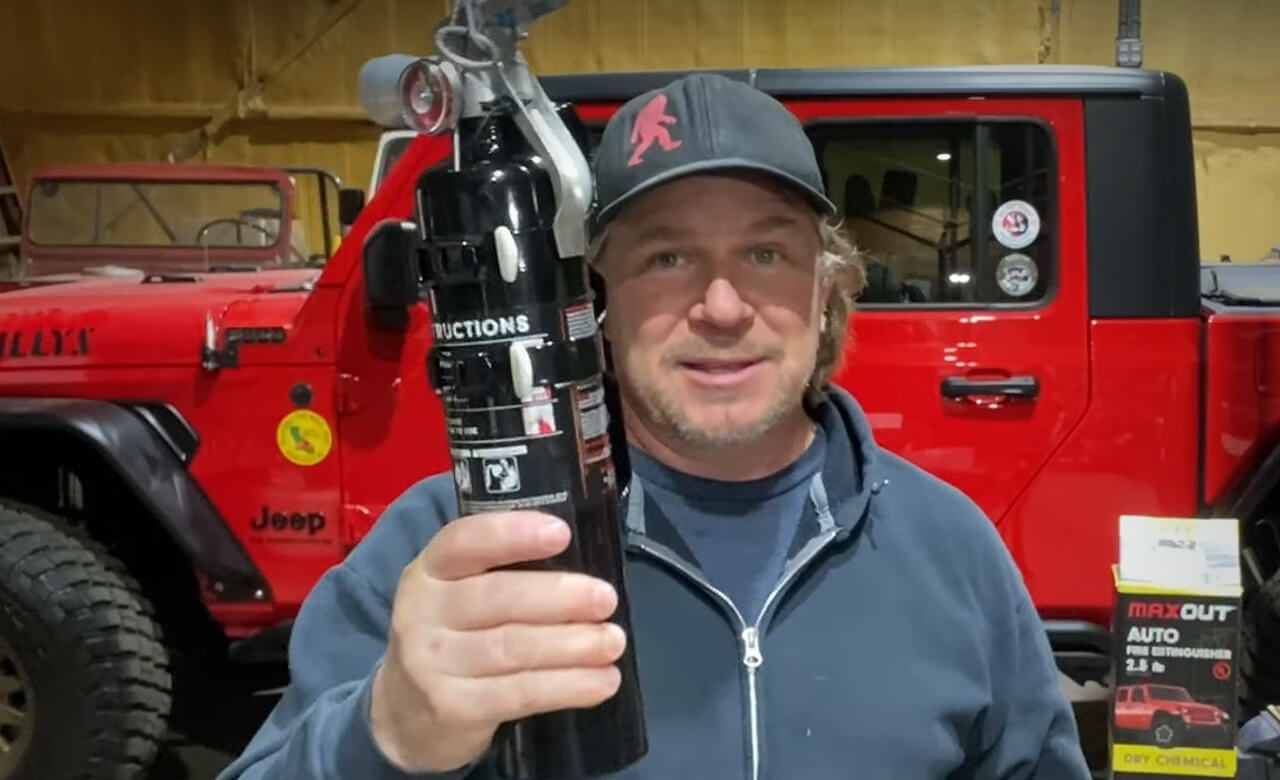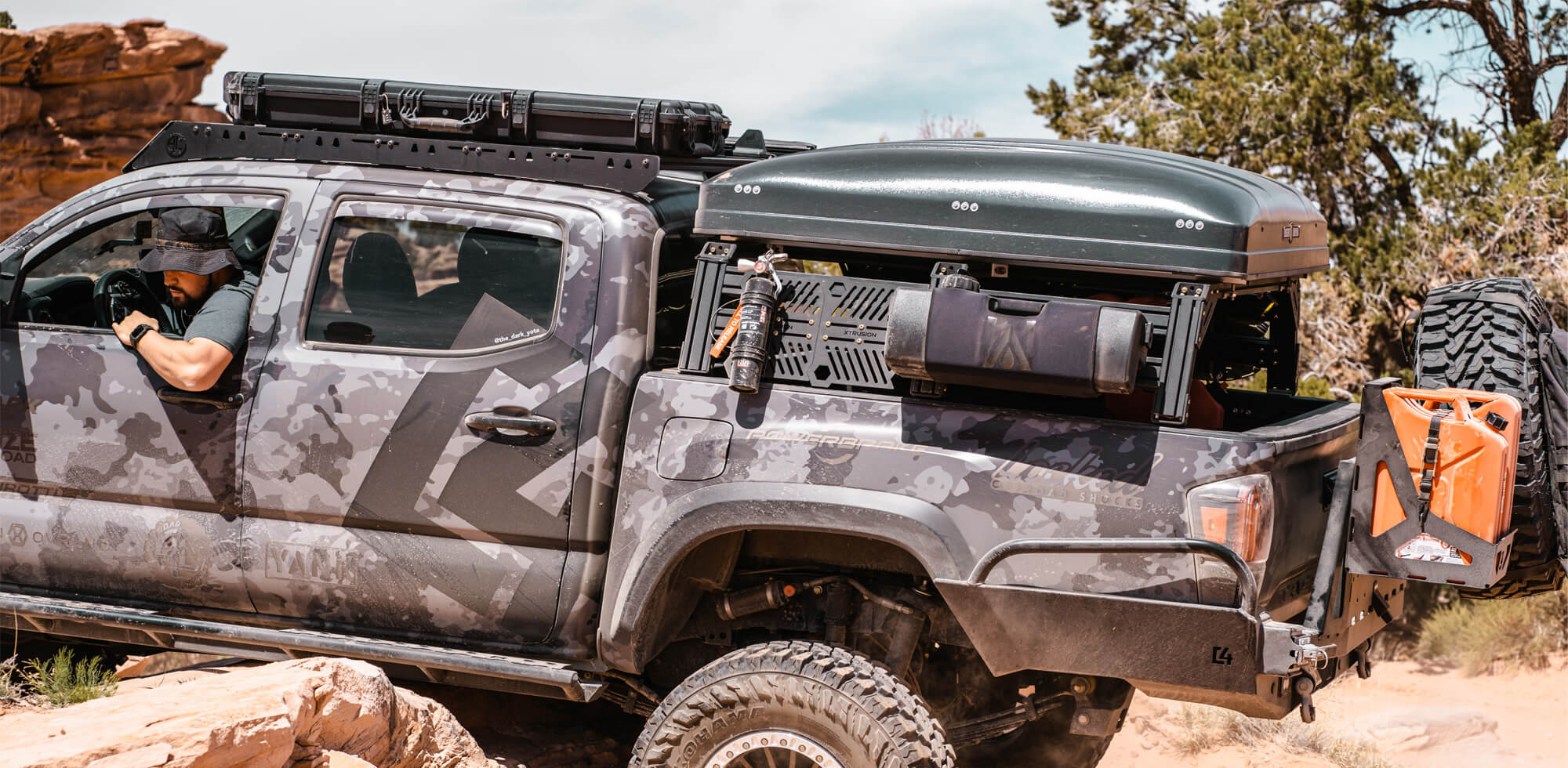Watch as Andrew Grindle averts disaster when his epic Corvette build catches fire during a drifting event, thanks to his quick thinking and HalGuard extinguisher. If you drift and/or have a modified car you won't want to miss Andrew's story, expert insights and the intense live footage!
Teresa:
All right, everyone, welcome to FireTalk. Today we have a really fantastic story that also comes with footage. Please welcome, Andrew. How are you doing, Andrew?
Andrew:
Hi, good.
Teresa:
You're here because you had a fire and you had to use our HalGuard extinguisher to put it out. Tell us what happened.
Andrew:
I do a lot of drifting, so it's very hard on the cars. I drive a Corvette and it has fuel rails that are aftermarket fuel rails, and I had an O-ring fail. I started smelling gas on the last lap and pulled into the pits to check it out. I guess the O-ring popped and fuel ignited and immediately just, in an instant, the whole engine bay was up in flames and luckily I had the HalGuard right behind me.

I actually had a passenger in the car so I was able to instruct my passenger, you know, get out. I killed the power and everything. So I grab the HalGuard and, you know, it only took a few seconds. Once I popped it and sprayed the engine that it kind of just blew everything away in terms of the fueling of the fire. We found the fuel leak and saw where it was and paid attention to it and made sure we sprayed it a couple of times afterwards because it was still leaking to make sure it didn't reignite and the HalGuard, you know, it didn't run out right away or anything like that. There was enough juice to sit there and tend to it and make sure it didn't reignite or anything, which was awesome.

Teresa:
And no clean up. So how did it go afterwards? Was it just a pretty easy repair for you to get it back on the road?
Andrew:
Yeah, actually it's the fuel rails are two bolts on that motor. So I took 2 bolts out and figured out that one of them was loose and it wasn't tightened down all the way in the back. Just took those off, replaced the O-ring and put it back on. I was actually drifting like an hour later on the same track, so.

Teresa:
Oh, that's so awesome. It's exciting to hear those stories when people are like, I put out the fire, made a quick repair and got right back to it.
Andrew:
We weren't sure. I was like, oh, man, I'm done for the day. But I didn't have to clean a bunch of stuff up. I didn't have to take wires apart, like it was so fast, none of the wires melted or anything like that. So it really saved the day. Not just the day, but obviously my entire build, because if it hadn't gone out, that would have been a lot of monetary damage that we put into that motor.
Teresa:
So, what made you choose H3R Performance for your build in the first place?
Andrew:
The cleanup was the main thing, so not having to risk damaging anything with a traditional fire extinguisher. But the size of it with how much power it has behind it, it was kind of a no-brainer. I like having it right behind me on my roll cage so I can grab that 2 ½ lb, pull the pin, squeeze the lever and just grab it and go.
Teresa:
Yeah, that's so smart, because time is of the essence. The stats are fires can double in size in 30 seconds or less depending on fuel and oxygen. So, you don't have a lot of time.
Andrew:
Exactly. And once we popped that hood open, you can see in the video once you pop the hood open, the flames immediately doubled in size, you know, rose up as soon as we gave it all that oxygen from the outside air.
Teresa:
So tell us a little more about this build. It sounds like you put a lot into it.
Andrew:
I did. I've had it for almost three years now. I bought it as just a plain, base Corvette and I did a lot of motor work. The first thing I did was put a cage in it. It's a competitive drift build, so I do a lot of regulated competitions around Florida. And so once we got the cage in and put a kill switch and that all the safety stuff was in place, then we started building the motor so. It makes about 500 horsepower to the wheels. Nothing too crazy, but it's pretty competitive in the brackets that we’re running. Built the heads-up and ported everything lots of aftermarket parts, alternators, belts and everything to support everything. Radiator for cooling of the whole system, oil coolers, all that good stuff. And then I started doing like wide body and carbon fiber parts and all the aesthetic stuff on the outside as well. So yeah, that's a lot of time and money that would have, you know, if that fire had grown, burning all those parts that would have been beyond the engine bay that would have been really sad.
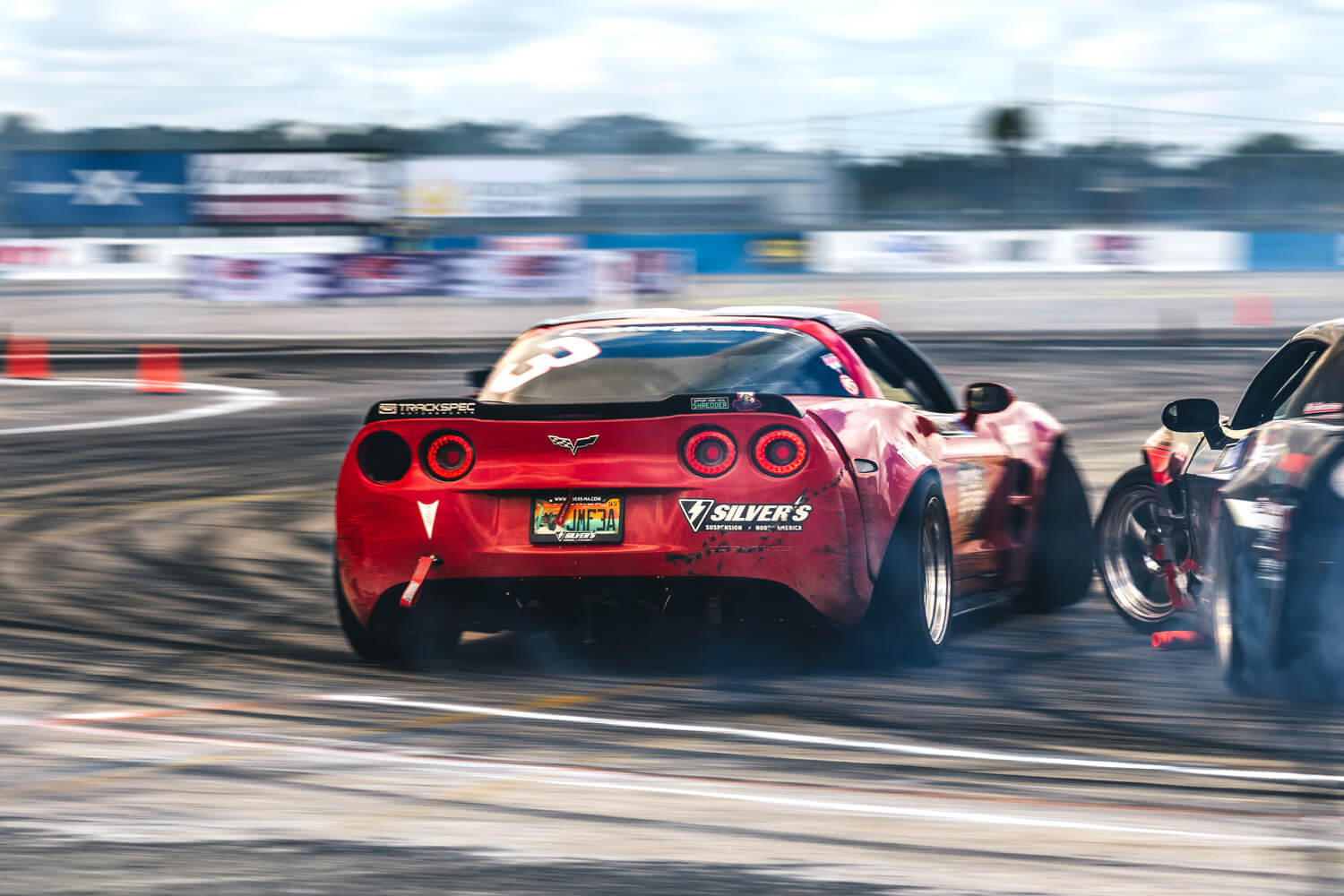
Teresa:
I like that you kind of went with your safety first before you really started building it out. Like all the performance stuff, just because a lot of people do it the other way around. And that's kind of when you can get into trouble.
Andrew:
I've learned over the years I've been doing this for probably 7 years now, like just drifting in general and then in the car scene for even longer than that. But yeah, I see a lot of people doing appearance stuff first. And bypassing safety and I've run tech lines at the track before so. I have seen a lot of the mistakes that people make and I fortunately get to learn from other people's errors as well.
Teresa:
So what got you into cars and drifting and all this?
Andrew:
I think whenever a young man gets their driver's license, they kind of get into cars. Maybe not speaking for all young men, but you know, you wonder what the gas and the brake do at the same time. And you know when I was a kid there were a lot less electronics assisting the vehicle so there was a lot more raw power going to the road, so yeah, it was a mixture of getting your driver's license and growing up in Florida, there's a lot of dirt around, so you can kind of mess around without having to risk other people or endanger your yourself as much. So that was fun. I grew up with a larger backyard, so being able to just kind of mess around and figure things out, you know, especially in the loose dirt, you get that feeling of drifting and going sideways, so that really filled my adrenaline and it was probably my most favorite activity to do.
Teresa:
If people are interested in following your adventures and drifting, what are your socials?
Andrew:
Everything I have is under Grindle garage. My last name is Grindle, so it's I rebranded earlier this year to Grindle garage, so that everything is one consistent name. I'm on YouTube. I do some like half hour segments on YouTube where you can kind of see my whole preparation for events and then the actual footage of drifting and then maybe some afterthoughts and whatnot. I kind of spent some more time on there. And then I have Instagram as well and Facebook so that I can, you know, post clips and pictures and all the quick stuff as well.
Teresa:
So people can go to your YouTube, you learn from others mistakes. Now people can learn from you and not make those mistakes too.
Andrew:
Yeah, yeah. I get a lot of feedback on my YouTube of people who just are new or trying to get into it and they're learning some things that they didn't know with me showing as much as I can on there, so it's great. And then you know, I have a young daughter as well so down the road she can just watch that and be like, oh, OK, that's what was going on back in the day. She's super into cars, so she sees me in the garage and she's just like wanting to go out there and bang on things with a hammer.

Teresa:
Well, that's going to be fun as she gets older. You guys can work on stuff together. Well, thank you so much for doing this interview. Really appreciate it.
Andrew:
Absolutely. My pleasure to be here.
| Shop HalGuard |
